Moritz Grossmann Atum Hamatic and its Impressive Pendulum Winding System
Not just an automatic time-only watch!
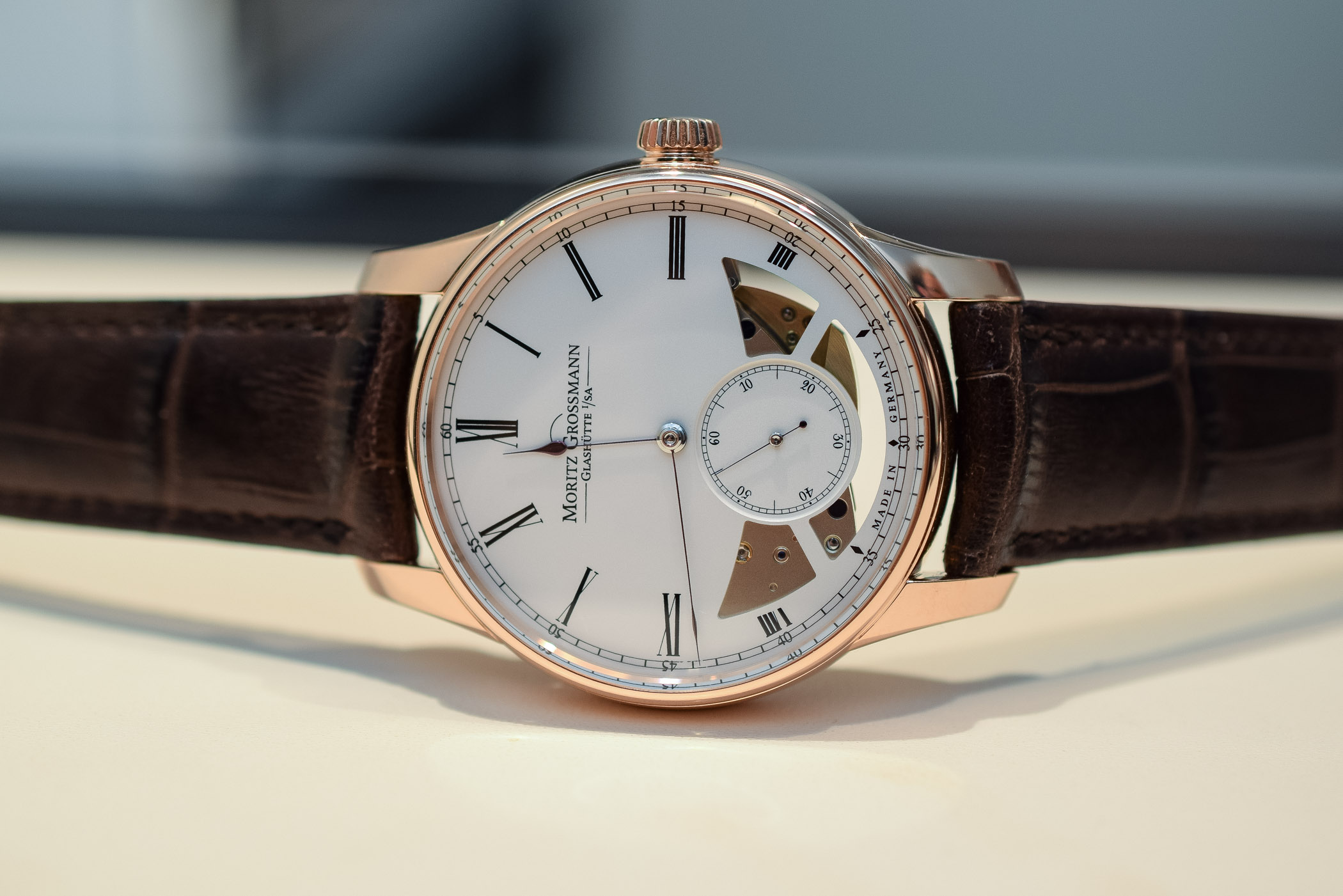
The vast majority of mechanical watches available nowadays rely on a central oscillating weight to provide power to their movements. Of course, we see lots of variations on this theme – for instance the winching system of the Jacob & Co. Twin Turbo Furious, off-centred micro-rotors, peripheral rotors or even linear rotors. However, the principle is the same and originates from early pendulum clocks. To celebrate and bring the pendulum-style movement of clocks into the 21st century, Moritz Grossmann presents the Atum Hamatic.
Background
The often overlooked manufacture of Moritz Grossmann, mentioned in our “Germans do it better?” article, produces some stellar watches with surprising complications and features that stand out from the crowd. And crowd is a relative term here, considering the fact the brand produces very low numbers of watches per year. The trademark Saxon style is present in almost every watch, with clean and legible dials and superbly finished movements. Moritz Grossmann however, offers a little twist from time to time, like a winding system incorporated in the lugs of a watch, or a movement that is constructed back to front so you see more of the mechanical splendour on the dial side.
Moritz Grossmann is based in Glashütte, which is the cradle of German watchmaking tradition. Other brands originating in this area are A. Lange & Söhne, Lang & Heyne or Glashütte Original. Moritz Grossmann has three core collections: Benu, Atum and Tefnut. In addition to these, unique or very limited editions based on one of the three collections are also on offer. The Moritz Grossmann Atum Hamatic represents the brand’s modern interpretation of a bygone idea to power a movement: the pendulum. It is not powered by a hand-wound or a traditional rotor-wound automatic movement, but by a pendulum-style hammer weight that moves back and forth through the motion of the wearer. Very much in line with old clocks like the Moritz Grossmann atelier used to produce during the 18th century.
An impressive movement with Pendulum Winding System
The Atum Hamatic is powered by the Caliber 106.0, a classic pillar movement, which is coincidently the manufacture’s first automatic watch to date. This pillar construction is reminiscent of pocket watches where the running gear is sandwiched between the mainplate and bridges, with pillars on the edge to hold everything in place. An aesthetic downside to most rotor-powered automatic movements is that they take up quite a lot of space adding a few millimetres in height and blocking the view of the movement quite significantly. Moritz Grossmann’s bi-directional automatic hammer mechanism, or Hamatic, is constructed in such a way that it blocks as little of the rest of the movement as possible. The movement of the pendulum can be observed through the apertures on the front side of the dial, thus giving the owner a peek into the workings of the watch.
A double click wheel mechanism, mounted on the filigreed arms of the hammer-style winding mass ensures the transition of the back and forth motion into a rotary motion. The pendulum is regulated in its motion by a catch bracket and fixed end-stops to ensure it doesn’t exceed its designated range of motion. A special yoke winder is installed and mounted on a separate bridge to allow for manual winding. The manual winder is uncoupled from the ratchet wheel by the yoke when the Hamatic system is active (i.e. winding the movement). In the manual winding mode, through the crown, the reduction gear is disconnected from the ratchet wheel by a click-pawl idler. The Atum Hamatic also features a balance-stop mechanism when the crown is pulled for setting the time. When the crown is pushed back in, the balance is released and the yoke pivots back into the ratchet wheel.
The finishing of the movement is superb, with bridges and mainplate made from German silver and decorated with an array of different techniques. A hand-engraved balance cock, for instance, broad Glashütte ribbing (a variation of Geneva stripes), snailing on the mainspring barrel, hand-chamfered edges, raised gold chatons, frosting on some of the parts and a vertical graining on the pendulum. The balance in each Moritz Grossmann movement is also built in-house and features four solid gold inertia screws, a pair of poising screws and a Nivarox balance spring with a Breguet terminal curve at its end tip. The movement can store a healthy 72 hours of power in its single barrel.
The Moritz Grossmann Atum Hamatic Caliber 106.0 features an incredible amount of parts, 324 in total, especially considering this is a time-only watch. The movement is covered by a solid silver dial, finished in elegant opaline white with elongated Roman numerals printed in black. On the outside perimeter of the dial is a printed minute track, also in black, with the “Made in Germany” slogan at the bottom. The three-part aperture on the bottom part of the dial not only allows for a view of the pendulum but it also brings focus to the recessed sub-dial for the seconds. The dial is fitted with a delicately crafted, handmade set of hands in an unusual brown-violet hue. Moritz Grossmann offers this colour in all its watches and it contrasts against the dial brilliantly. The elongated pear-shape of the hour hand and the very fine minute hand are hand-chamfered, filed, polished and heat-treated to perfection.
An otherwise classic watch
The Moritz Grossman Atum Hamatic has a rose gold case measuring 41mm in diameter and 11.35mm thick. The crystal on the dial and caseback are sapphire with an anti-reflective treatment on the dial. The slightly angled sides of the polished case provide the Atum Hamatic with a nice, soft profile, aided by a slim bezel. Time is set through the crown, but it can also be used to wind the watch if needed. The smooth, curved lugs ensure a comfortable fit, along with a supple chocolate-coloured handstitched alligator leather strap and a rose gold pin buckle.
The Moritz Grossmann Atum Hamatic isn’t limited to a certain number of watches but, you can imagine it will be a low quantity considering the complexity, the price and the number of watches produced in total by Moritz Grossmann. Talking about prices, the Moritz Grossmann Atum Hamatic will cost you EUR 39,900. A lot of money for a time-only watch, but this goes well beyond an hours-minutes-seconds watch. Do not forget the level of handcrafted details and finishing that go into the movement, dial and case and the unusual pendulum-style winding system. Yes, it is quite a steep price tag, but you get a lot of serious watchmaking in return. For more information, please visit Grossmann-Uhren.com.
About Moritz Grossmann
Carl Moritz Grossmann was born in 1826, the son of a mail sorter. Fascinated by technology, he travelled throughout Europe in the mid-18th century and found his way to La Chaux-de-Fonds, the hub of Swiss watchmaking. Returning to Dresden in 1854, he established his own atelier. He began producing pocket watches, pendulum clocks and precision measuring instruments and even developed complete movements. Not only involved as a watchmaker, Carl Moritz Grossmann supported local trade by dedicating time to various initiatives and projects throughout the region. This culminated in the German School of Watchmaking. After his unexpected death in 1885, the Moritz Grossmann atelier was liquidated and remained dormant for well over a hundred years.
In 2008 the brand was brought back to life by Christine Hutter who was fascinated by mechanical watches from an early age. Trained as a watchmaker, she worked for Wempe, Maurice Lacroix, Glashütte Original and A. Lange & Söhne before being appointed as managing director for Haute Horlogerie Schindler SA in Switzerland. Fueled by her passion for watchmaking, her vision of a manufacture, and supported through contacts made during her work in Switzerland, she established Grossmann Uhren GmbH in Glashütte, resurrecting the Moritz Grossmann brand.
From the start, Moritz Grossmann has insisted on the artisanal aspect of watchmaking with as much as possible done in-house and by hand. The smallest of details and components, and the most precise and time-consuming applications of finishing techniques are done by highly skilled craftsmen. In the development of prototypes and parts, machining is done by tools, multi-axle CNC machines and other systems to produce blanks that are within thousands of a millimeter of the desired specifications. That is the only moment where technology is used instead of doing things by hand. Other than that, hands, movement parts, the balance and much more are entirely made, assembled and finished by hand.

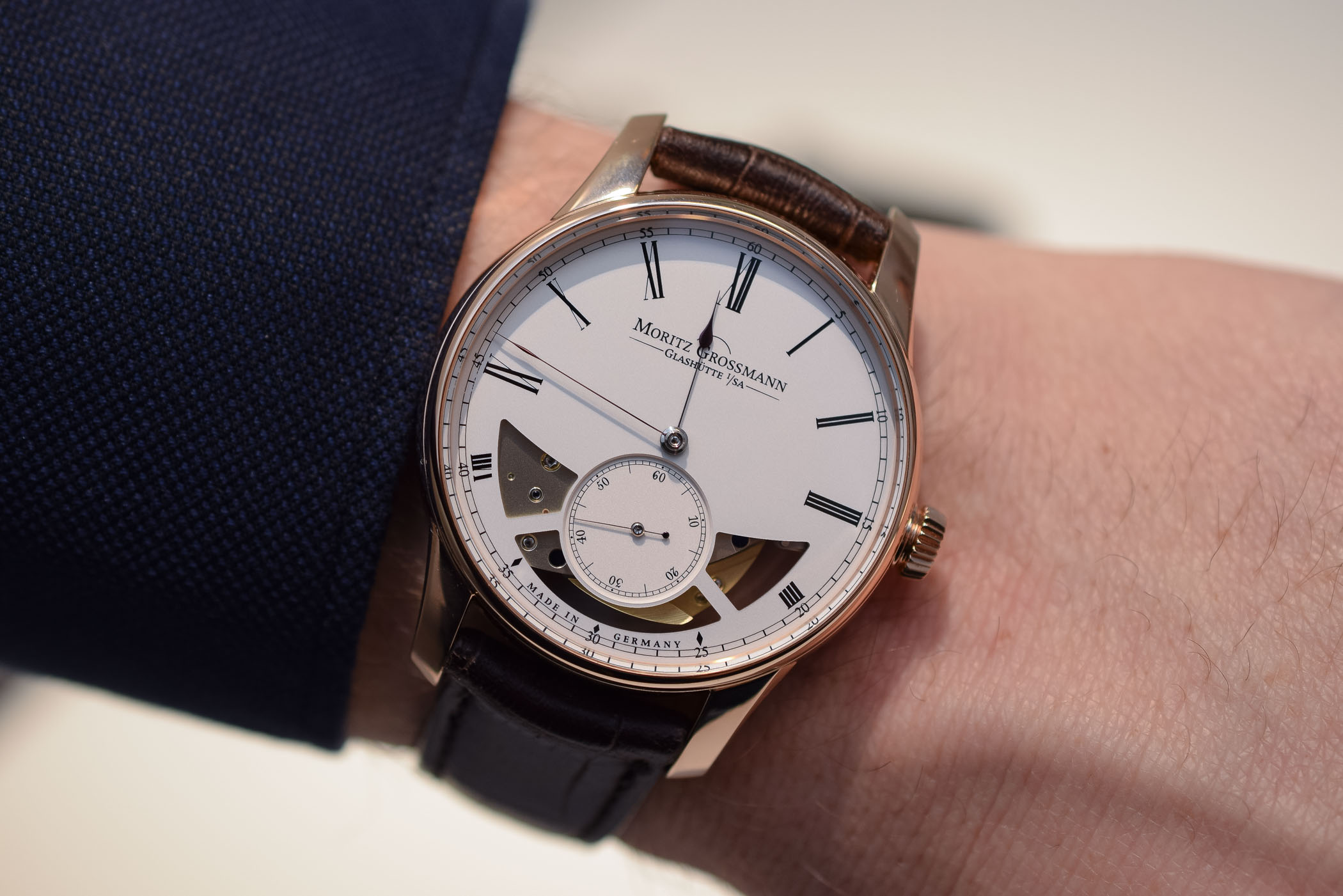
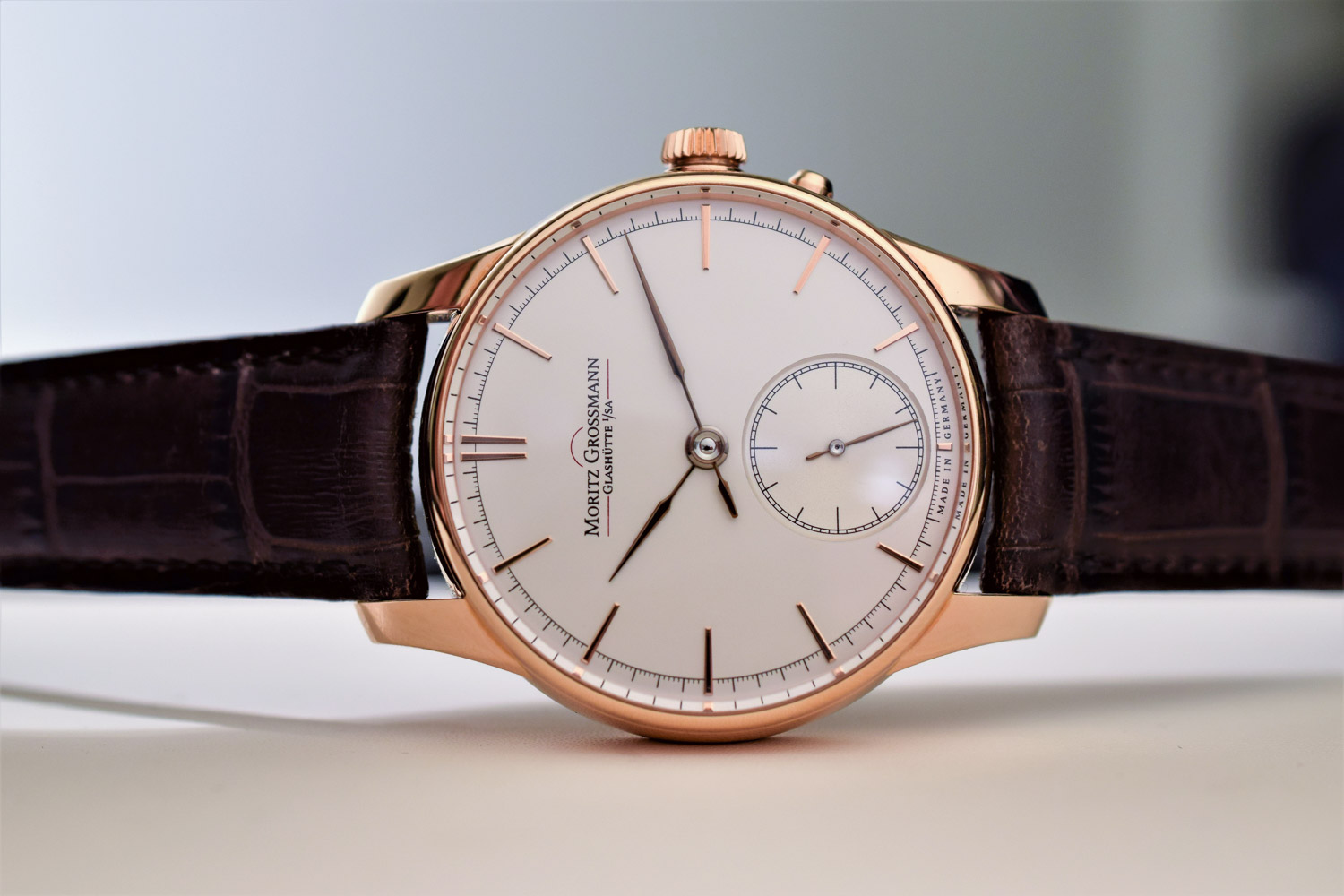
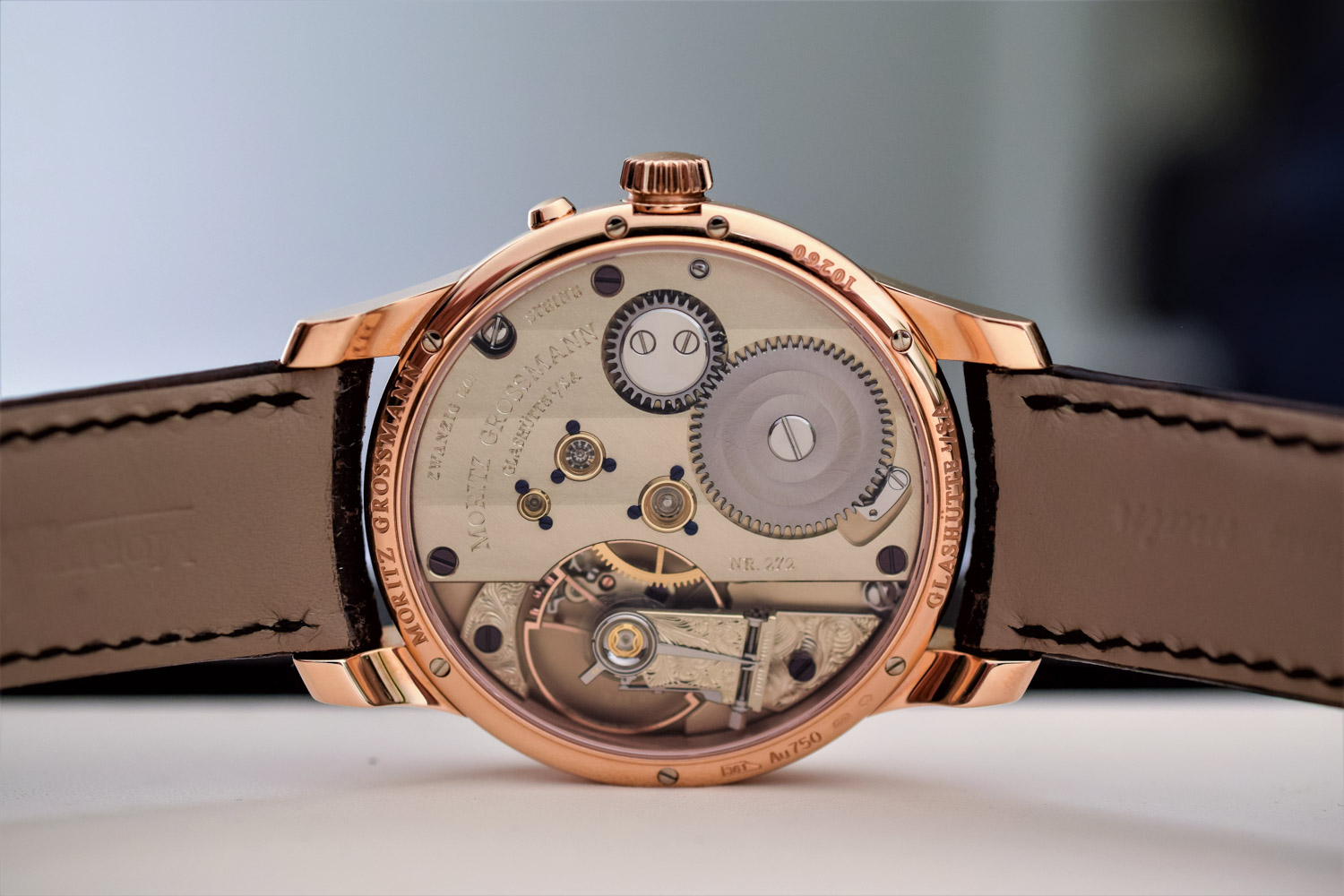
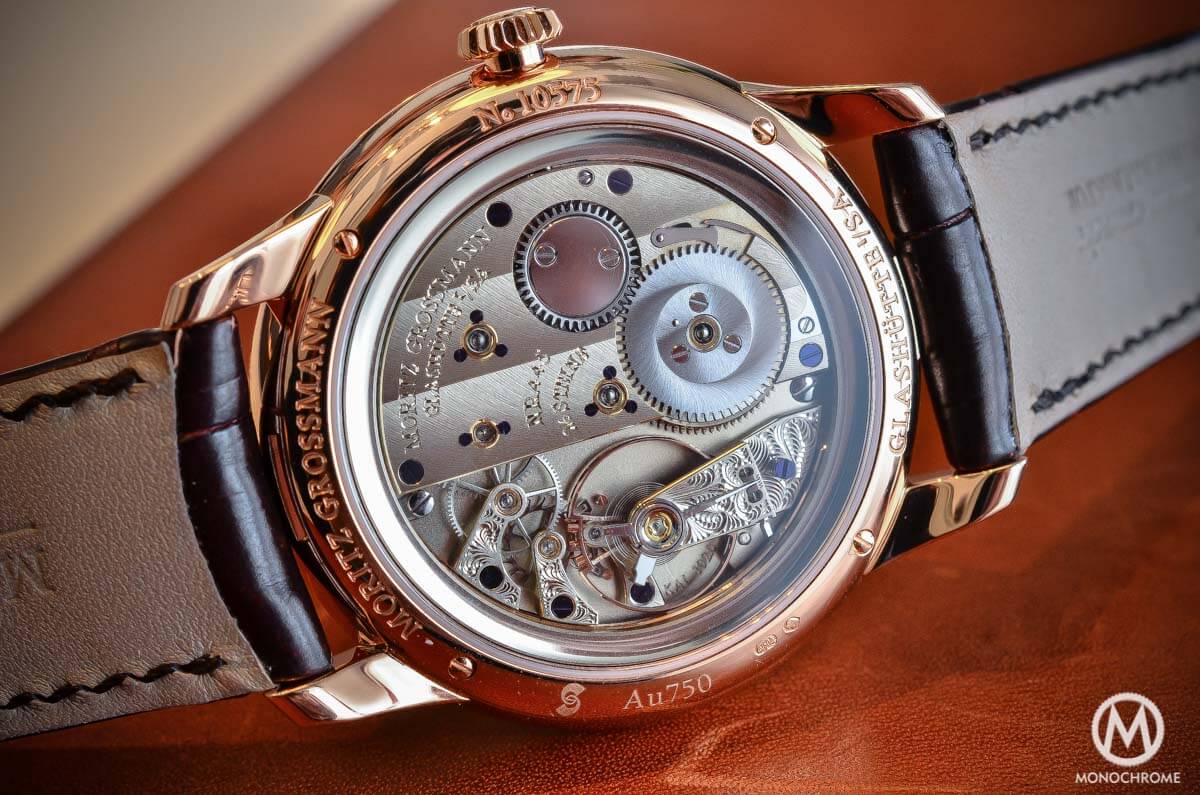

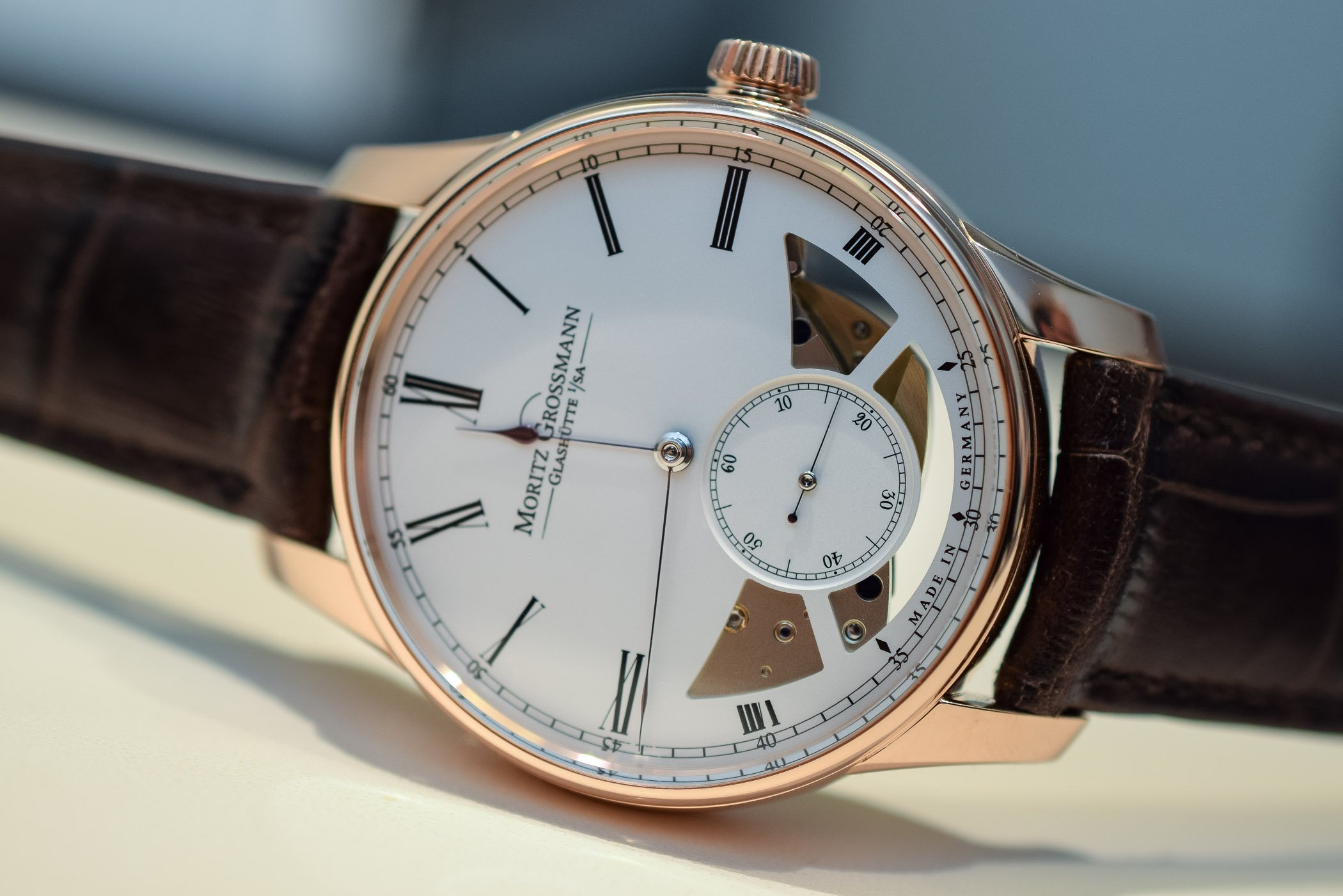
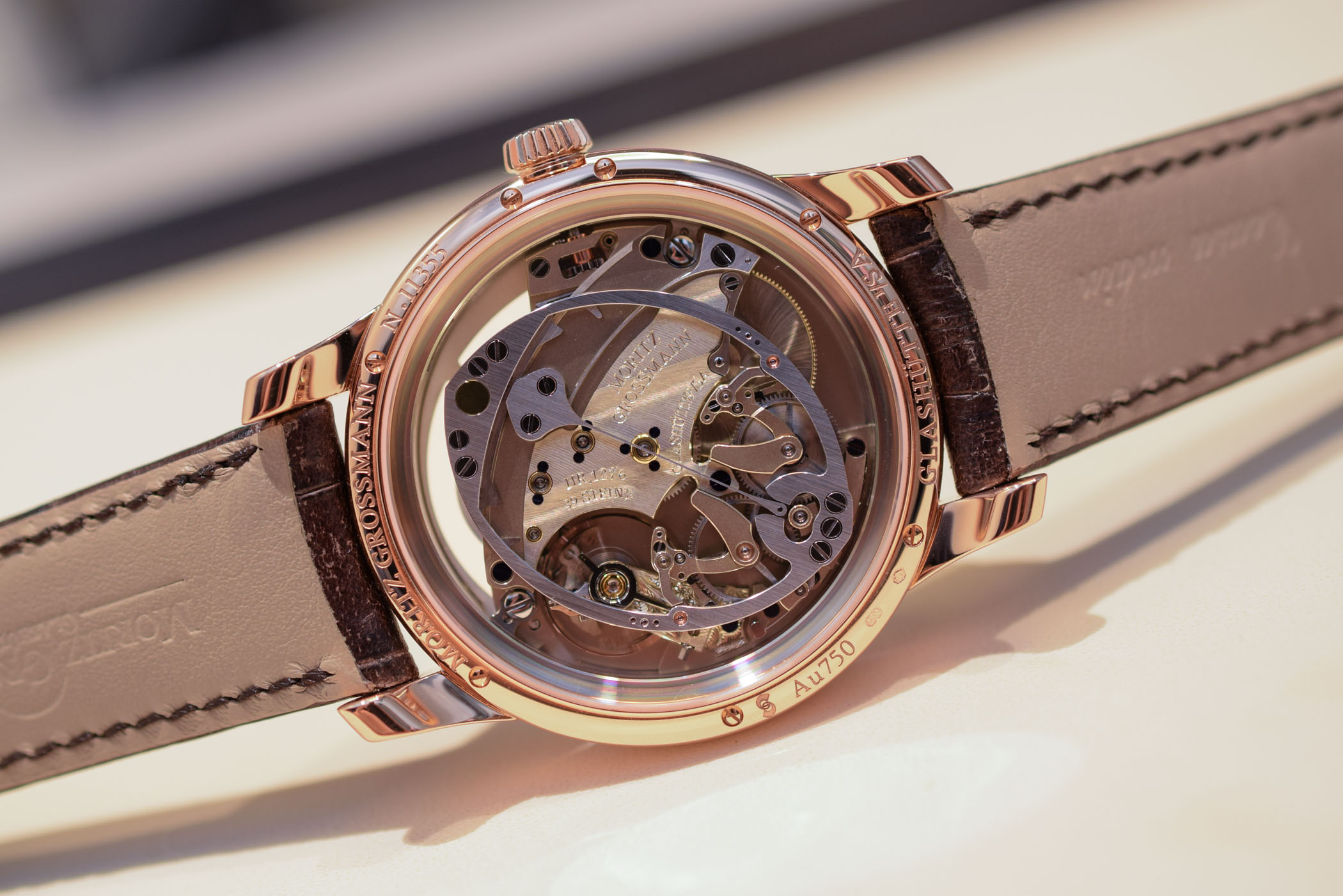

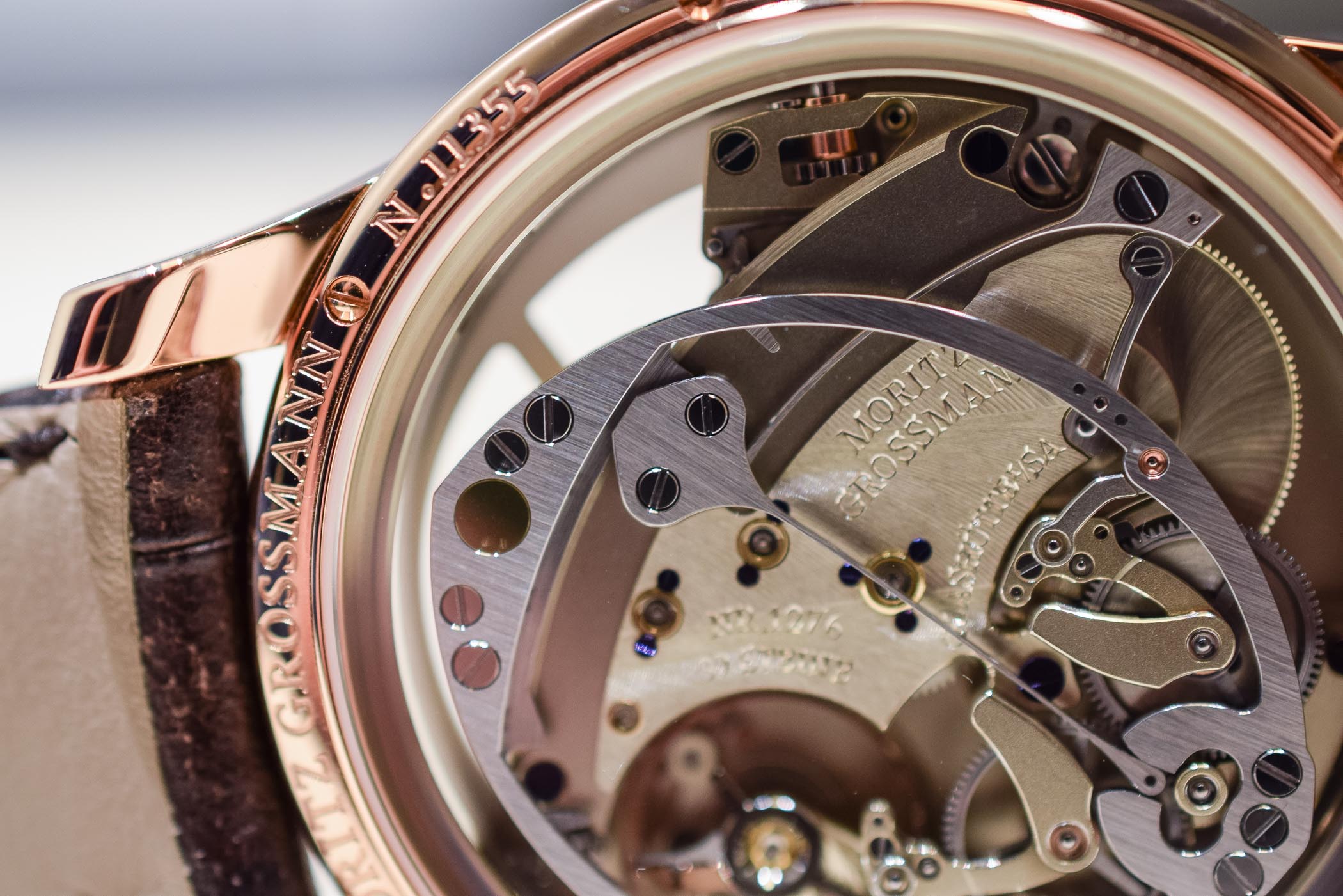
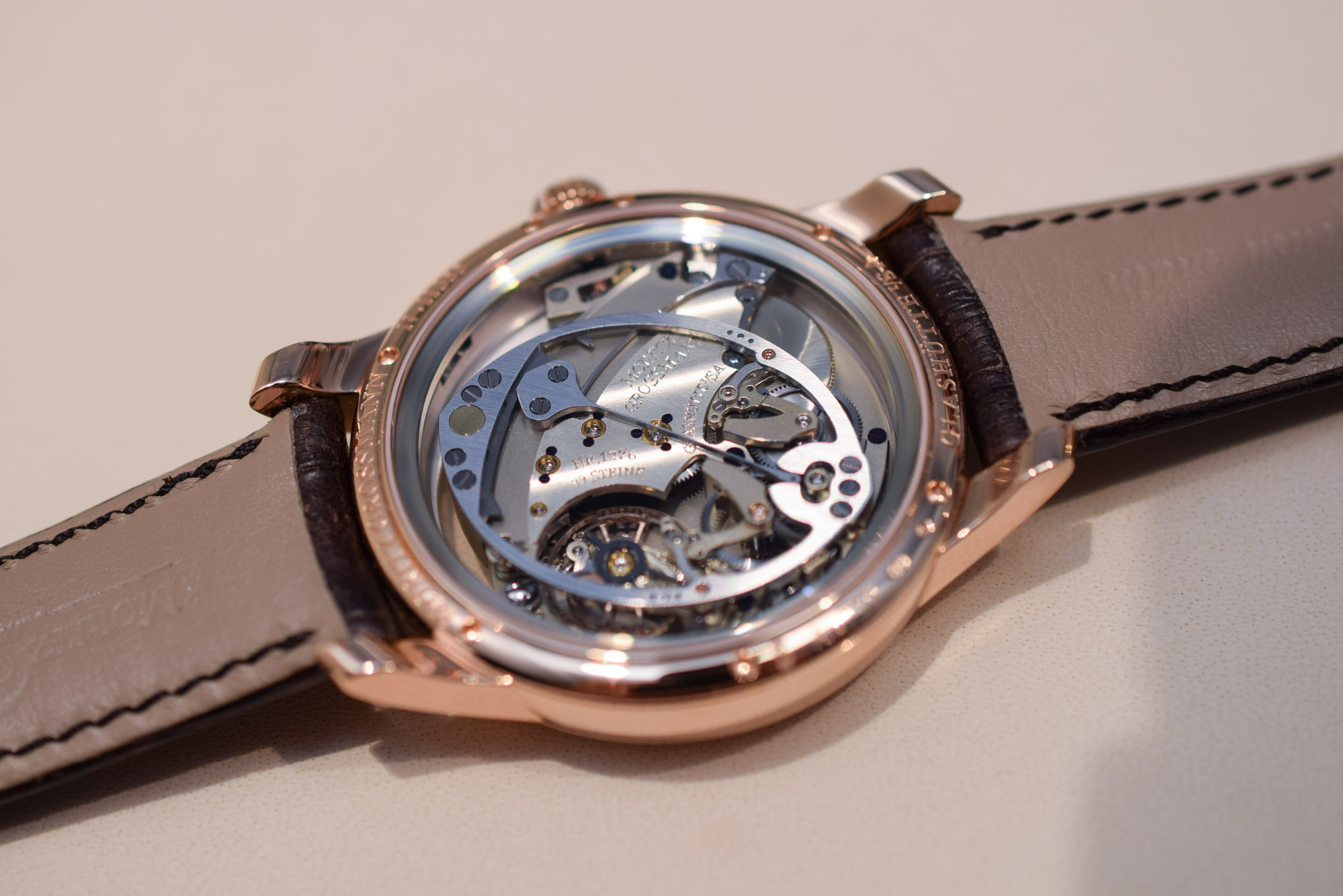
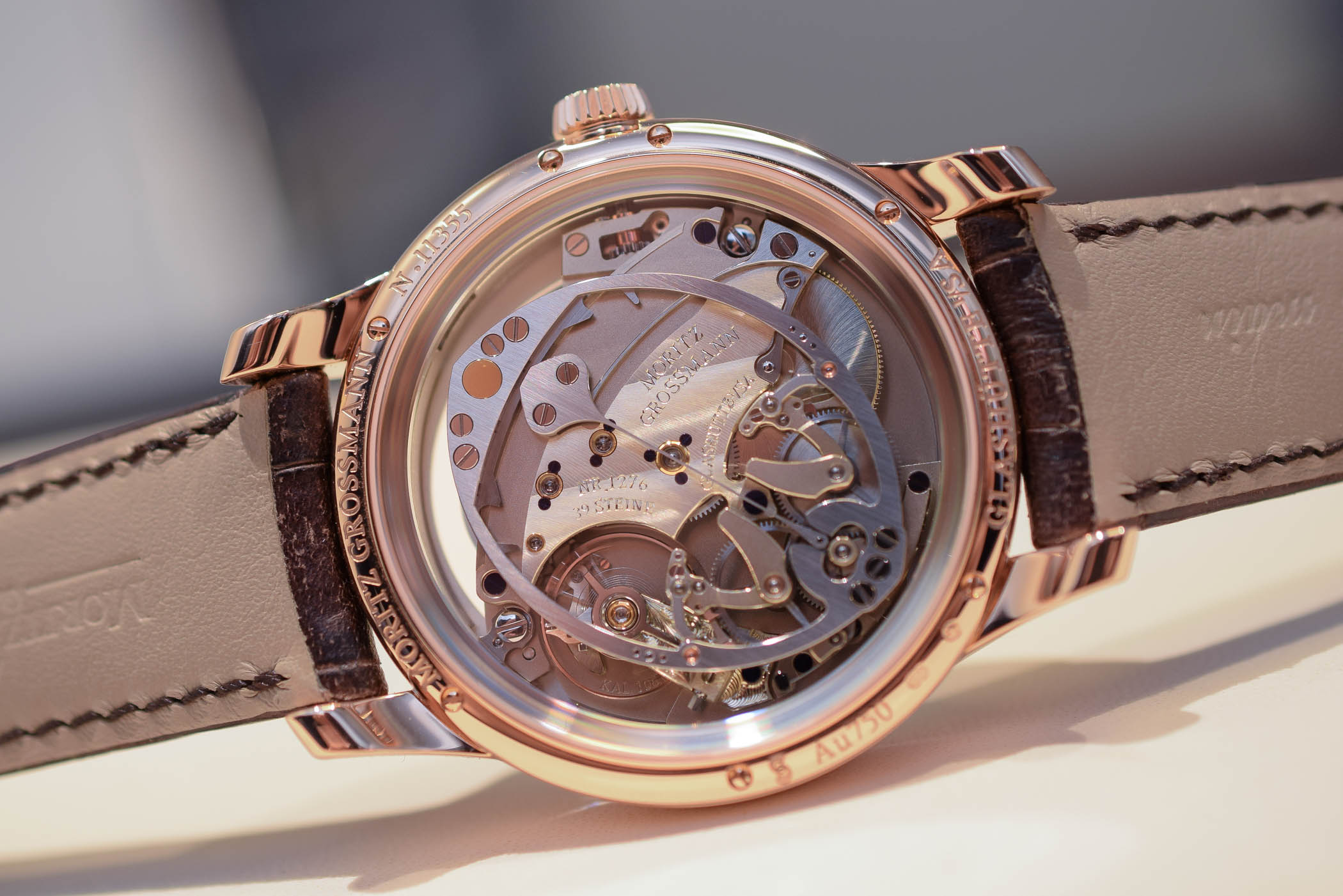

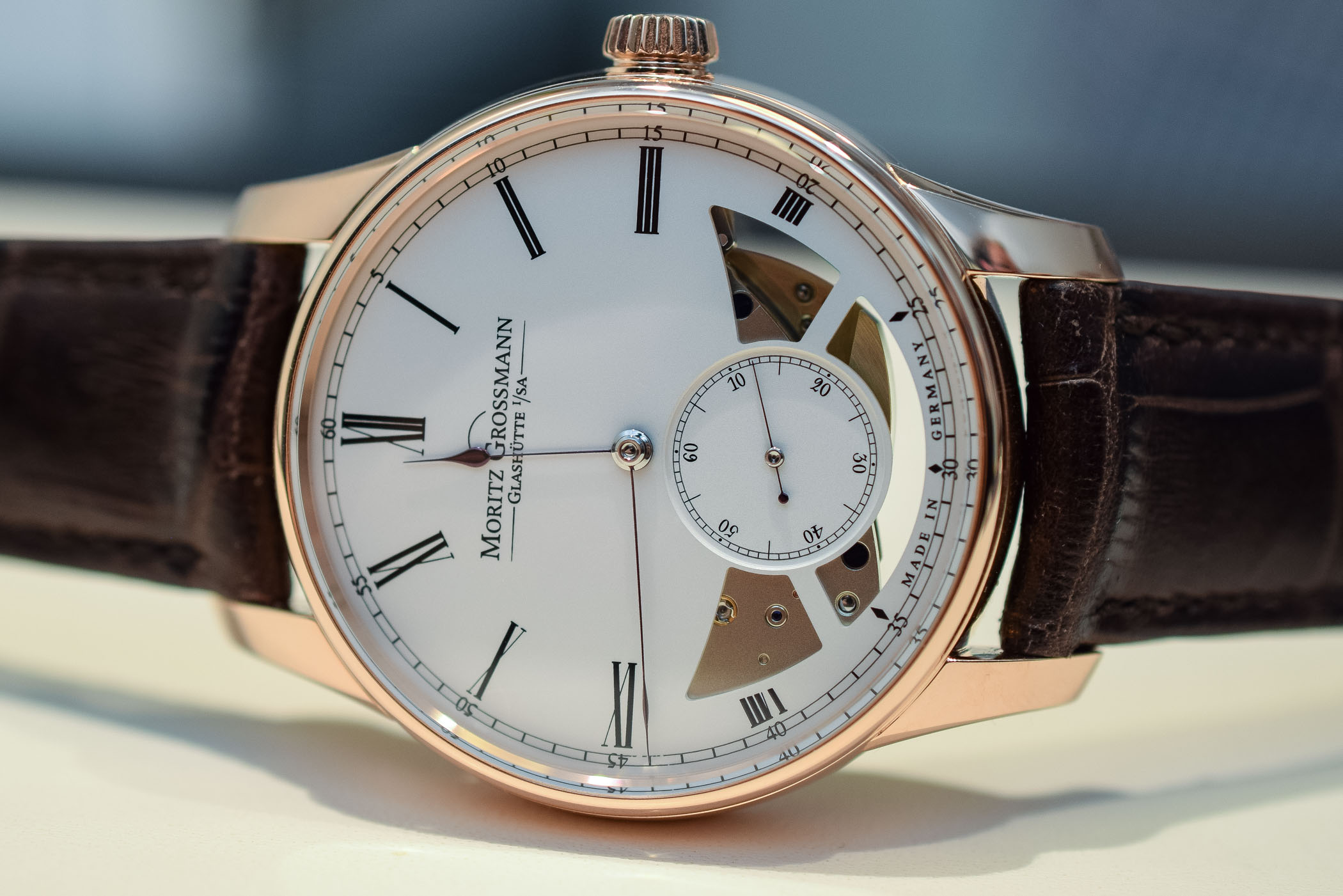
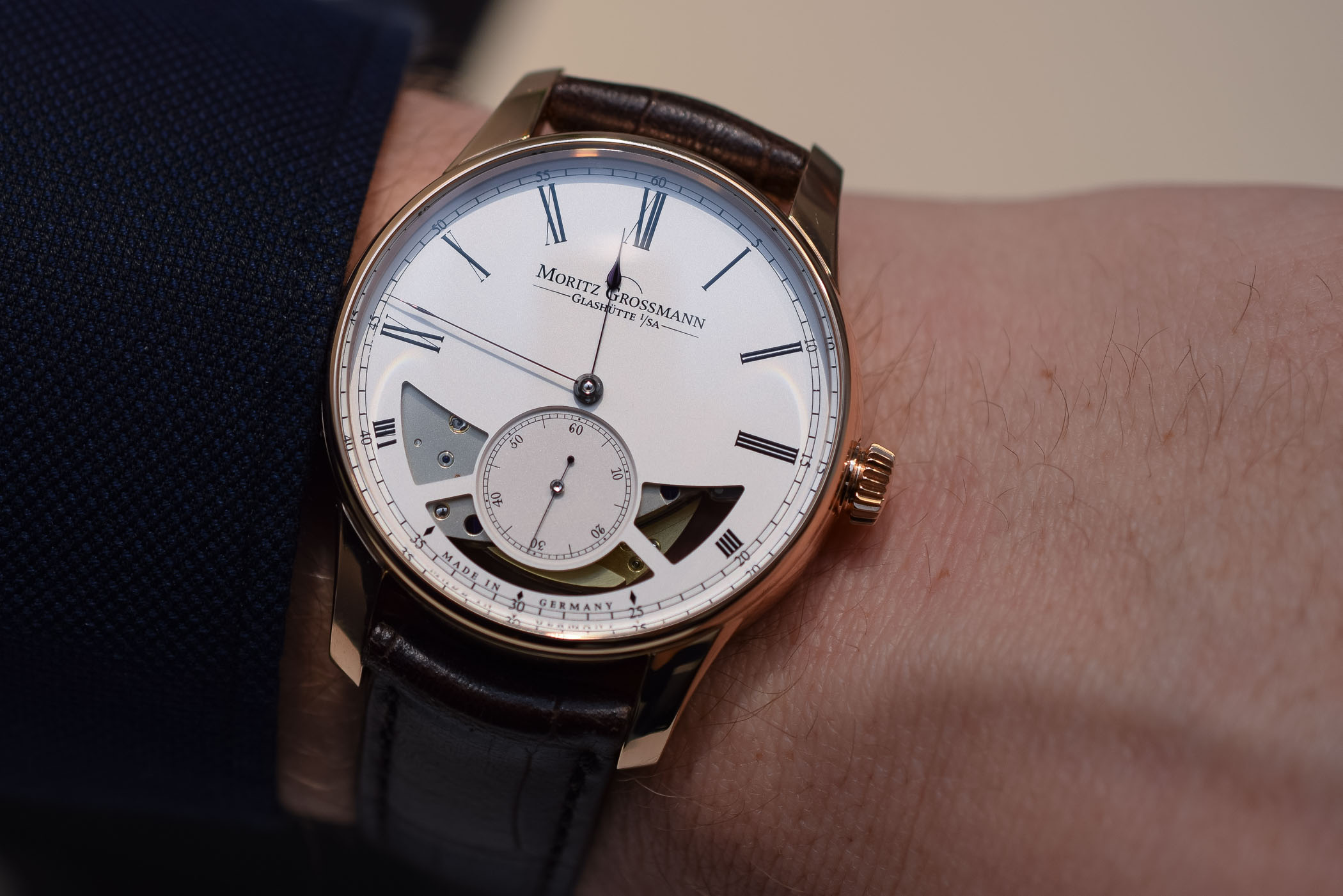



3 responses
I can only complain the three openings of the dial, truly unnecessary to me. Otherwise it’s another delicate and lovely novelty from Moritz Grossmann.
Only pics of the dial in left tilt. Would have liked to see it in right tilt since there is so much ado about the pendulum. I think Monochrome takes these pics right? If that is true, then this is a fairly serious oversight. I love the delicacy of this piece, particularly the hands. Very nice article on its provenance.
A beautiful watch ruined by a stupid decision to make the dial open-work